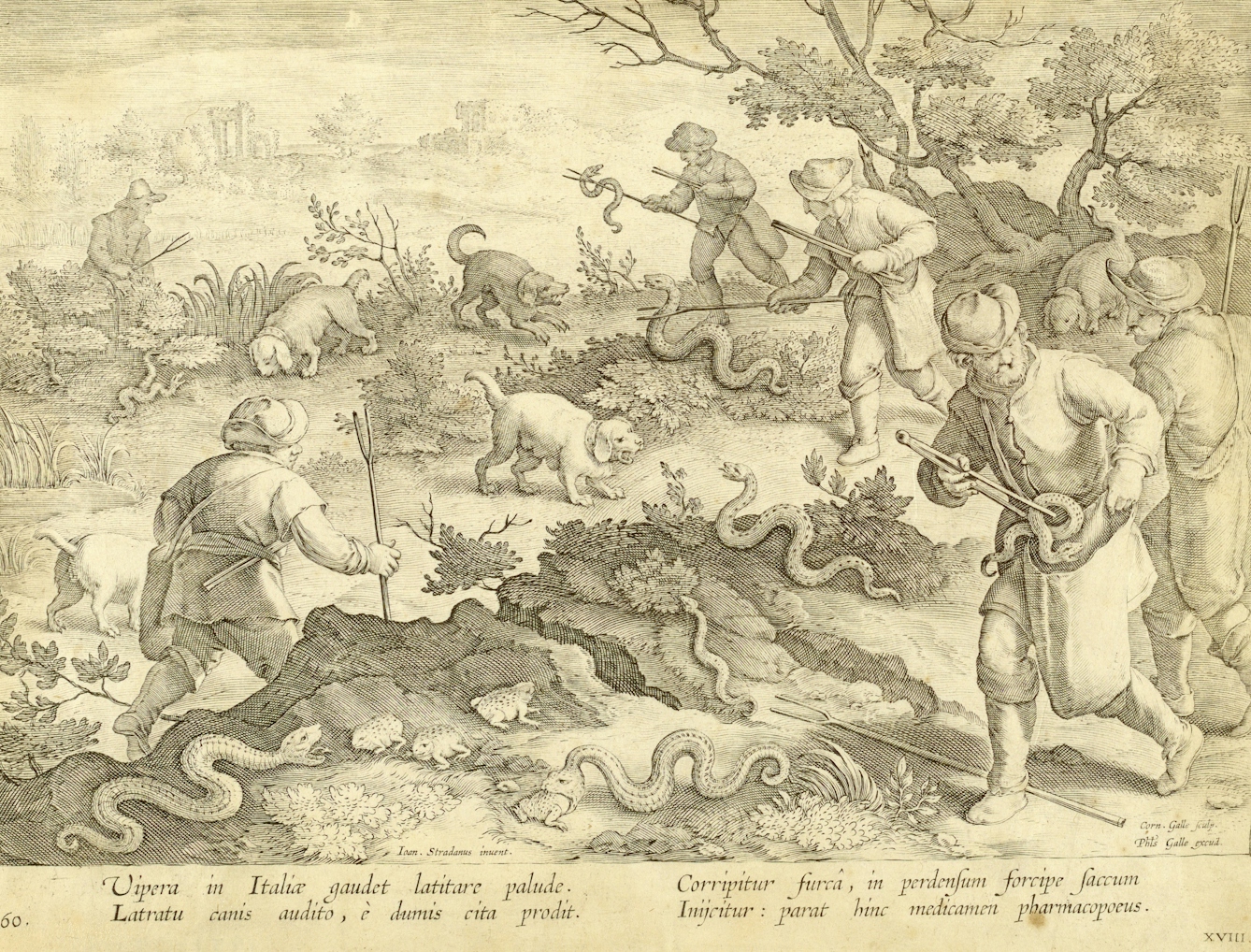The ancient remedy Theriac, also known as ‘treacle’, was in use for nearly 2,000 years. In addition to any medicinal effect, its success relied on premium ingredients, specific packaging, public spectacle and reputation – all factors that today help promote big brand names.
Theriac: An ancient brand?
Words by Briony Hudsonaverage reading time 5 minutes
- Serial
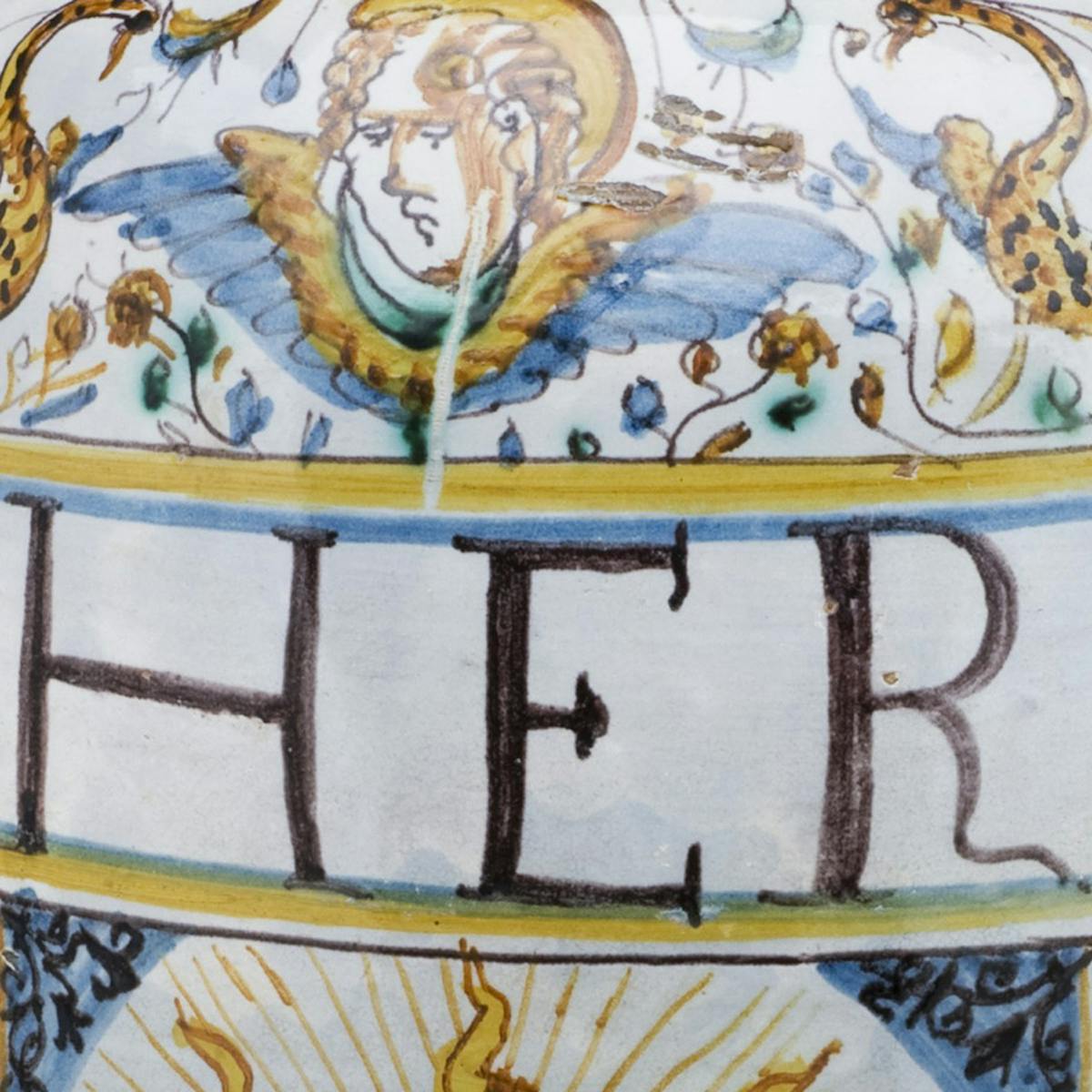
Theriac's history and ingredients
Legend has it that King Mithridates VI (132–63 BCE) of Pontus, a kingdom in Asia Minor, was so scared of being poisoned by his enemies that he invented an antidote that he took daily. When the Romans conquered Pontus they seized the famed remedy, known as mithridatium. Emperor Nero (37–68 CE) asked his physician, Andromachus, to improve on it, which he did primarily by substituting viper flesh for skink, a lizard native to the Nile. It was widely believed that snakes contained an antidote that prevented them from being poisoned by their own venom.
Viper flesh
The term theriac comes from the ancient Greek for a wild or venomous animal. ‘Therica’ was a poem written by Nicander of Colophon in the 2nd century BCE. It describes the nature of venomous animals and the effects of their bites.
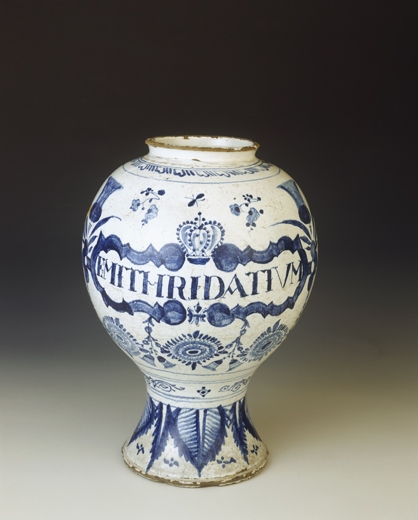
Display jar for mithridatium.
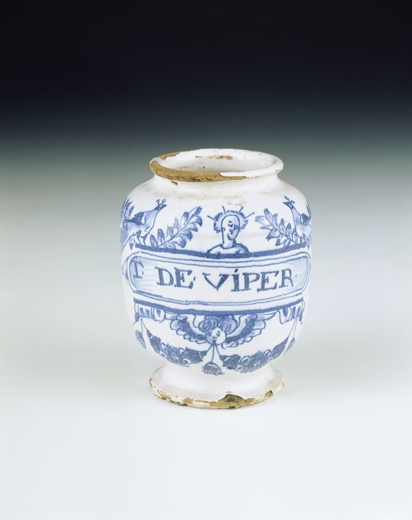
What distinguished mithridatium from theriac was the addition of viper flesh, a well-established ingredient in materia medica, as this earthenware jar shows.
Italian hunters with dogs are shown collecting snakes for medicinal purposes in this 16th-century print. Venetian viper sellers bred their snakes in viper gardens to ensure supply and quality.

An edition of ‘Hortus Sanitatis’ (1536) shows a man making theriac using viper flesh.
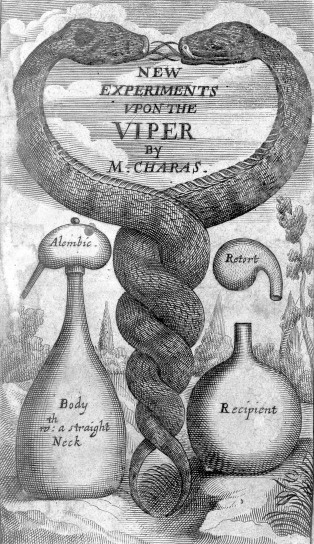
The French physician and pharmacist Moyse Charas (1619–98) wrote extensively on theriac – particularly on incorporating vipers into the recipe – in his book ‘New Experiments Upon the Viper’, 1673.
Nero’s improved formulation, Theriaca Andromachi, together with the original mithridatium, dominated the market for poison antidotes for nearly two millennia. Renowned physician Galen (130–210 CE) championed Theriaca Andromachi in particular, which ensured the popularity of these formulations for centuries, even though the original recipes were lost.
Their ancient ancestry certainly gave them an aura, as did the sheer volume of ingredients. In the first century CE, Aulus Cornelius Celsus suggested 38 ingredients, and Pliny the Elder suggested 54, commenting that “this is obvious ostentation of skill and prodigious exploitation of knowledge”. Galen’s own formulations seem to have stabilised the recipes, with around 52 ingredients for mithridatium and 60 for Theriac, including herbs, minerals and viper flesh. The presence of opium was also undoubtedly a key factor in their success. But medical historian Annette Bierman suggests that although the balsamic ingredients may have had a slight antiseptic action, any effect against poisoning would have been purely psychosomatic.

The first page of ingredients for theriac in ‘Manufacturing Apothecary or Chemist’, 1741–95.
Over time theriac came to accommodate many variations; as Andromachus had adapted mithridatium to reflect European ingredients, so later apothecaries developed their own local versions. The Italian physician Pietro Mattioli (1501–77) created a super-antidote with 125 simple ingredients plus theriac, mithridatium, unicorn, red coral and pearls. Theriac of the Poor omitted viper’s flesh and contained only five inexpensive ingredients. In 1722, Theriac Edinensis appeared in the ‘Edinburgh Pharmacopoeia’ with only 11 ingredients. The term theriac was spread globally by missionaries, merchants and physicians, with evidence of recipes in Brazil, China and Japan from the 1700s. Forms of mithridatium appear in Islamic medical literature spanning seven centuries, probably derived from Galen and other Greek texts.
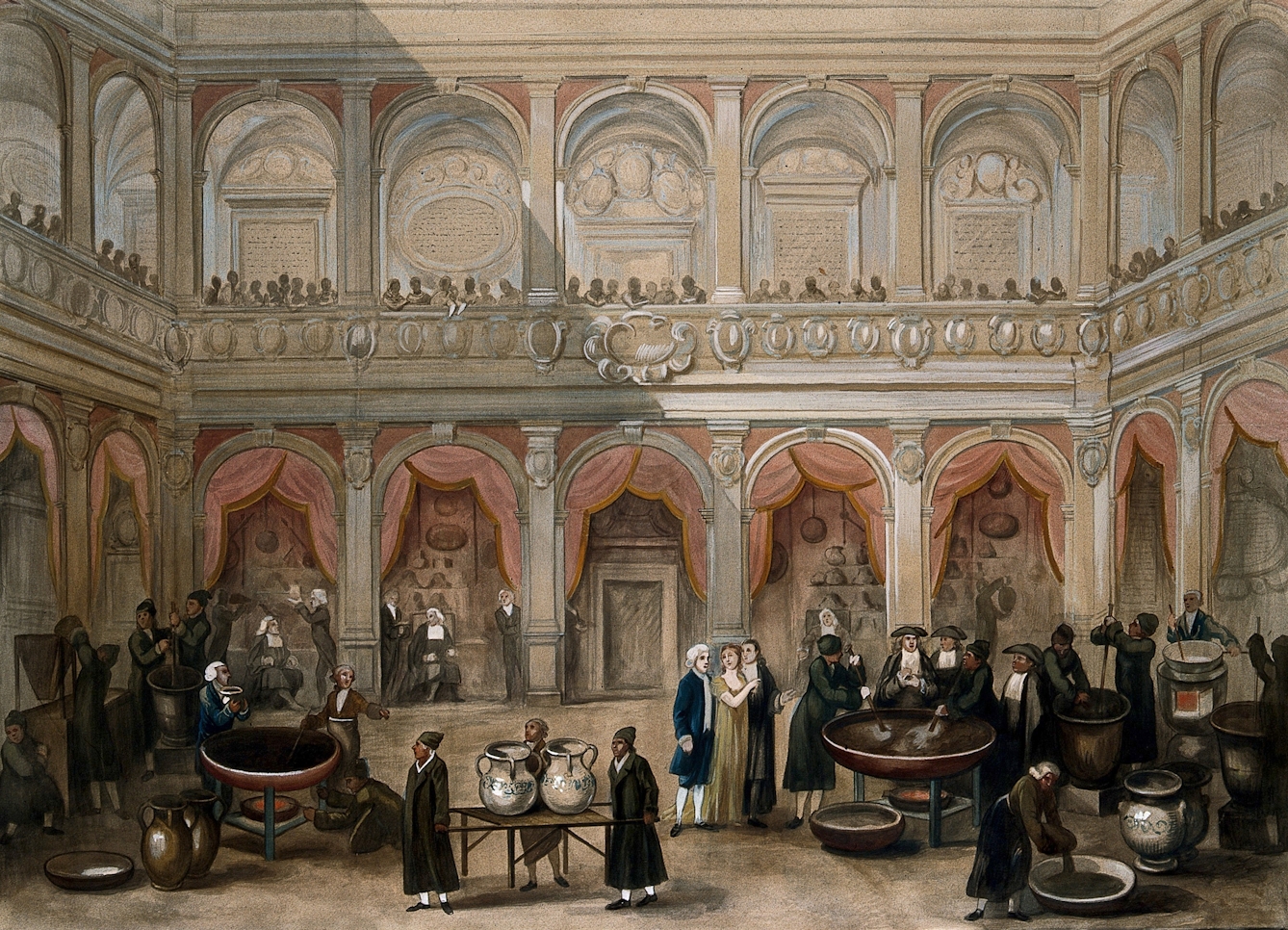
Aleardo Terzi’s drawing shows apothecaries and inspectors examining the theriac preparation processes, watched by shadowy members of public in the gallery above.
In Europe, a key promotional tool for both theriac and mithridatium was the pomp and circumstance surrounding its public compounding in city squares by leading apothecaries. The ceremonies provided an opportunity to legitimise the preparations and to perpetuate the theriac brand. Galen wrote that theriac reached its greatest potency six years after preparation and kept its virtues for 40 years. There was therefore a practical logic in preparing large amounts at one time. In 1712, 150 kg of theriac was prepared at one session in Maastricht in the Netherlands.
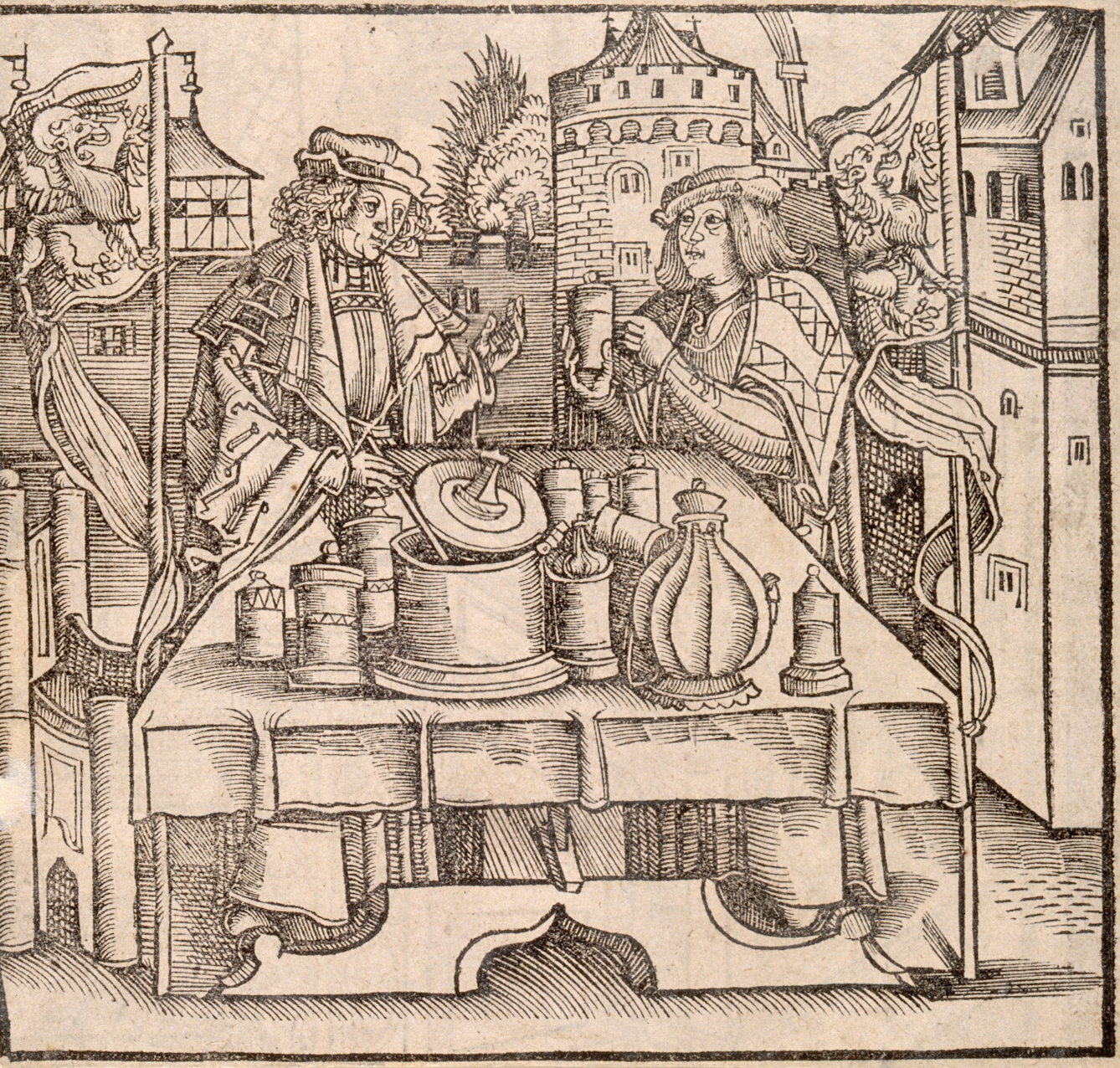
Hieronymus Brunschwig’s ‘Book for Distillation of Composite Things’, c. 1505 shows the public preparation of theriac by an apothecary in a city square, banners flying, watched closely by a physician.
This theriac stamp depicts an ostrich and the lions of St Mark’s, Venice. It may have belonged to Albrizzi, whose theriac was prepared “at the sign of the Ostridge” in Venice. The stamp ensured that it was prepared under supervision.
The English writer John Evelyn (1620–1706) purchased his ‘treacle’ after one such ceremony in Venice, confessing that “the making and extraordinary ceremony whereof I had been curious to observe, for it is extremely pompous and worth seeing”. These public events generally consisted of a display of ingredients to impress the citizens and allow officials to check their quality, followed by up to two days of preparing the ingredients, with constant inspections. Venice, like other cities, established supervisory committees and authenticated the highly expensive preparation with beautifully designed stamps, a precursor of the commercial power of the manufacturer’s brand logo. The last theriac ceremony happened in Paris in 1790. British apothecaries eschewed ceremonies, simply claiming that their preparations were superior to imported European theriacs.
Eventually theriacs began to lose their aura. Nicholas Culpeper’s description of theriacs as “terrible messes of altogether” was part of a wave of criticism from the 17th century onwards. French chemist Nicolas Lemery (1645–1715) criticised them as “monstrous descriptions, which only serve the purpose of throwing dust in one’s eyes, making the composition very expensive and difficult to prepare”. John Quincy (d. 1722) called them “the only relics of ancient superstition that now remain among us”.
Theriac jars
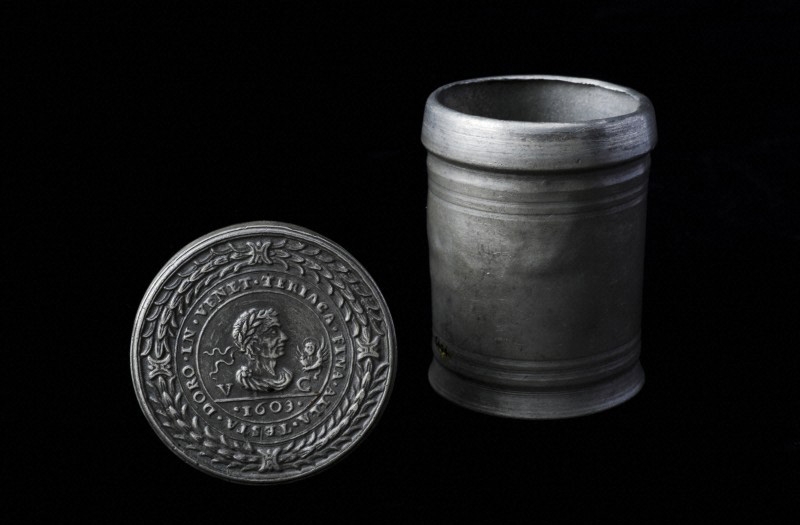
Cylindrical pewter theriac container with a drop of the original contents. The lid is inscribed “Teriaca fina alla resta doro in Venet”, which translates as “At the sign of the golden head in Venice”. Venice, 1603.

Earthenware jar for storing theriac. Italy, 1641.
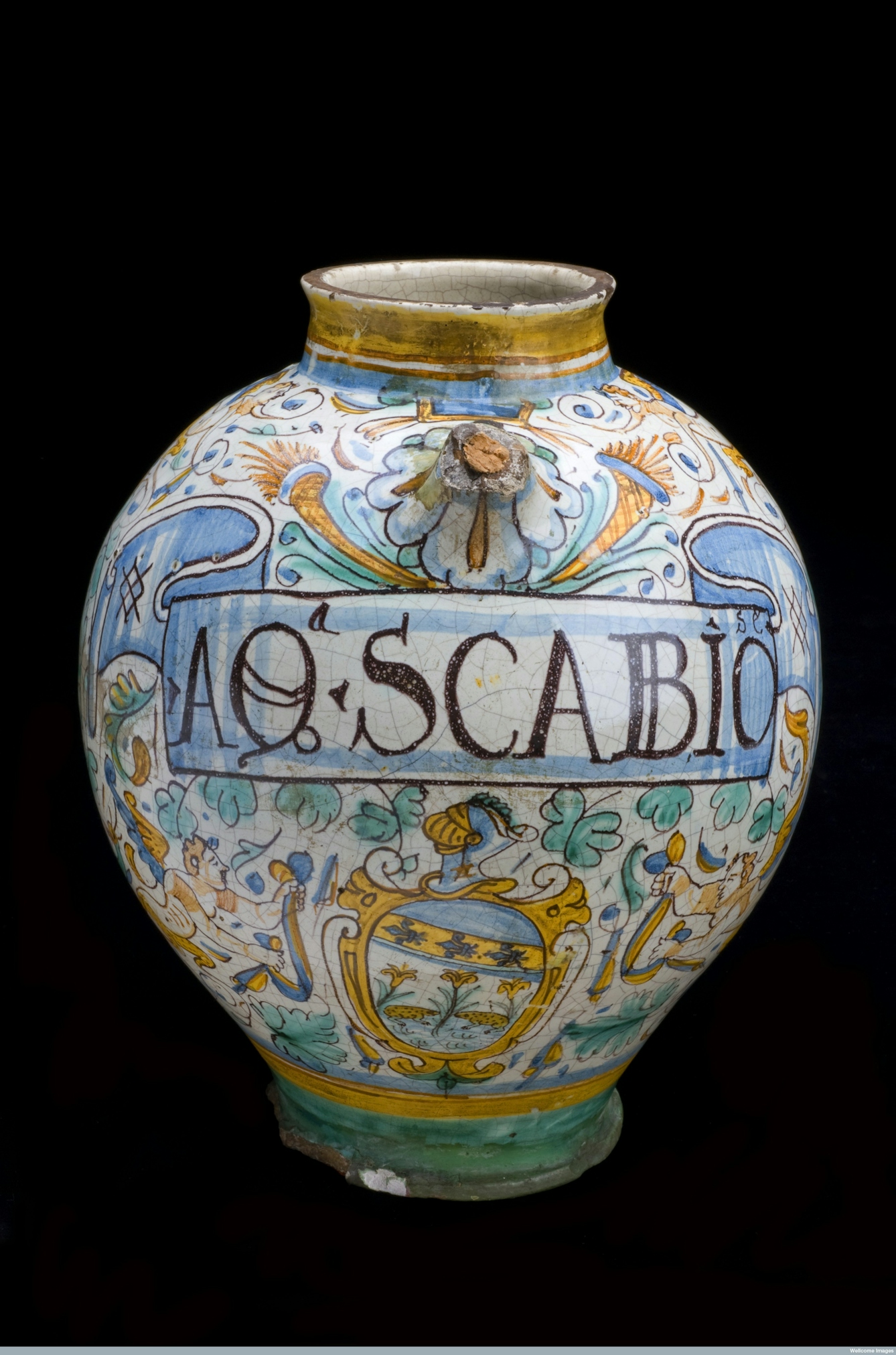
Aqua Scabiosae or scabious water was infused with pink, white and blue scabious flowers and stored in this earthenware jar, probably with a protective cover of vellum or paper tied with string. The water was drunk to expel phlegm from the body, especially if coughs and colds were affecting the chest. Taken with theriac, the treatment was used against plague. Perugia, Italy, 1648.
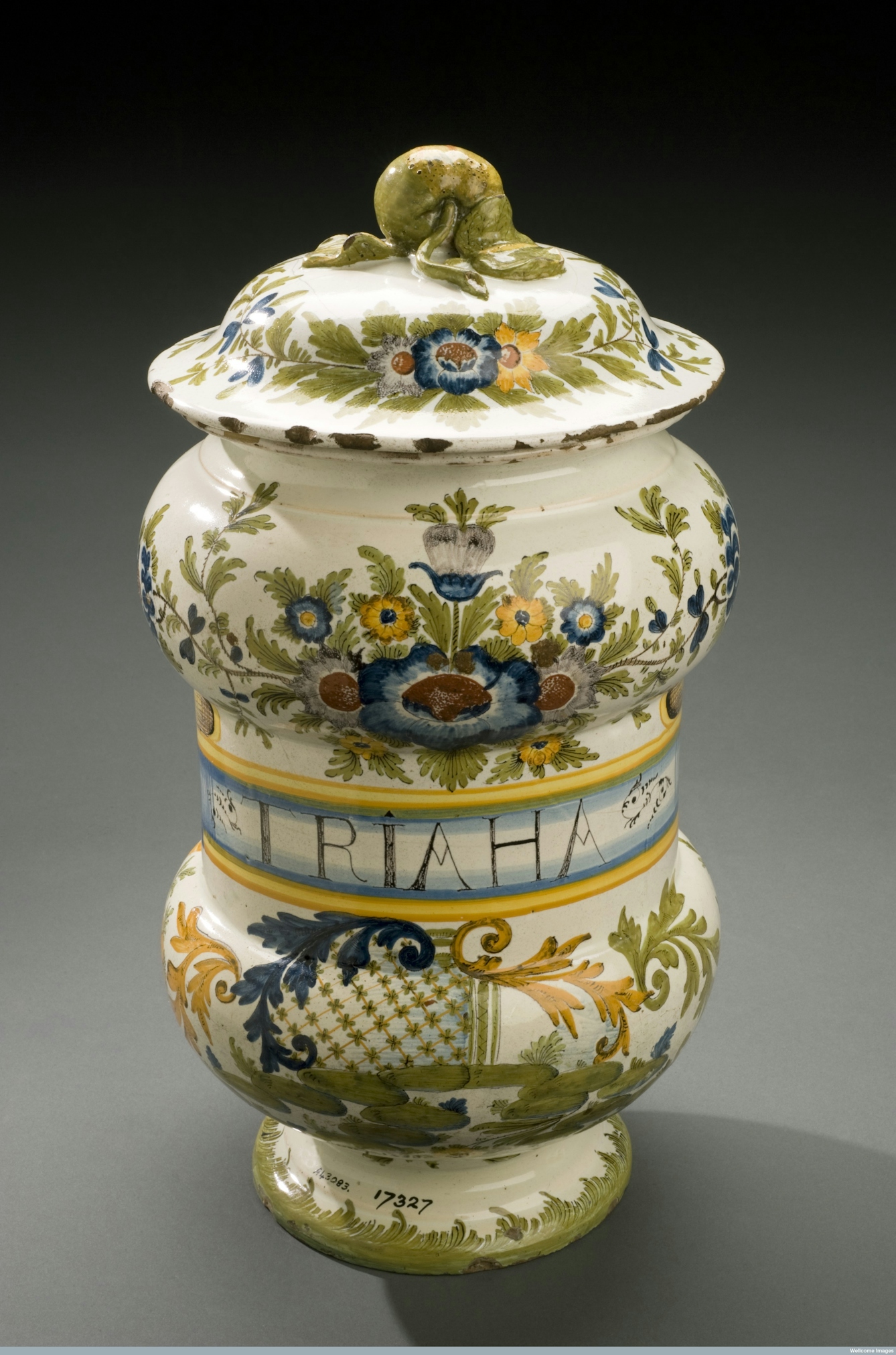
Ornate tin-glazed earthenware albarello (jar), used for storing theriac. Italy, 1701–70.
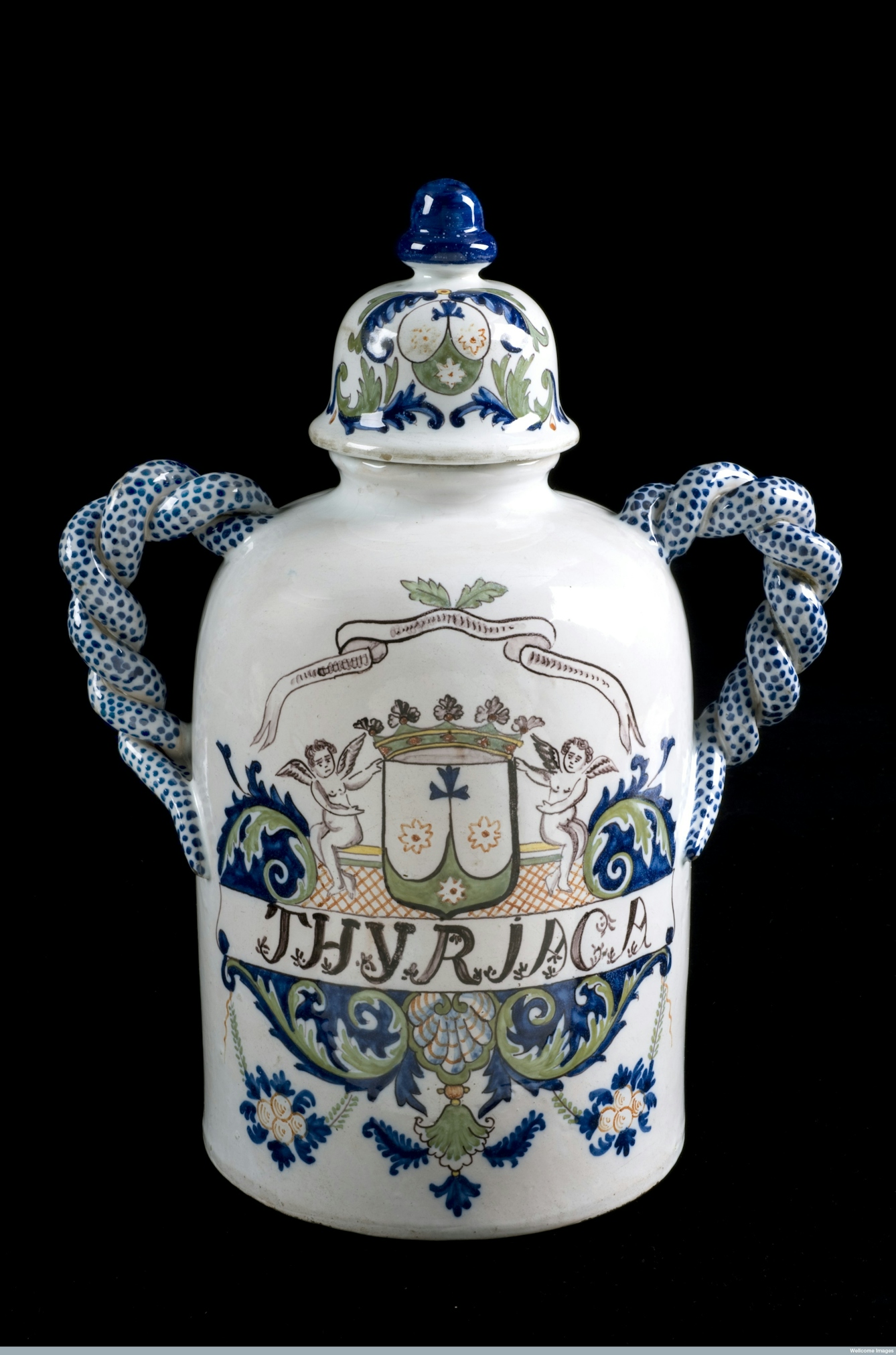
Theriac storage jar, French, Hustin factory, Bordeaux, 1725–75, used by the Carmelite Order.
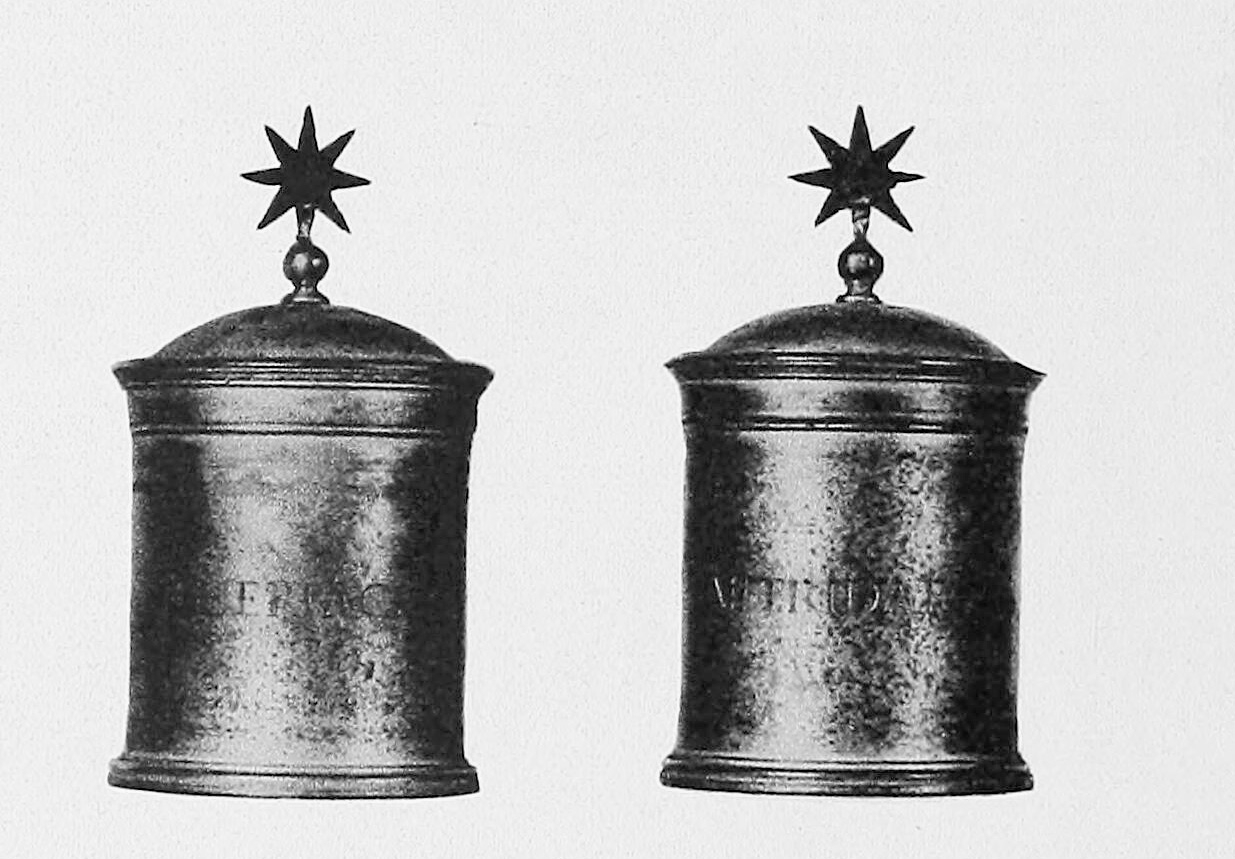
According to a report in the ‘Chemist and Druggist’ in 1929, Cardinal Fabio Chigi had these two pewter jars, labelled “mithridati” and “theriaca”, made specially for his pharmacy in the 17th century.
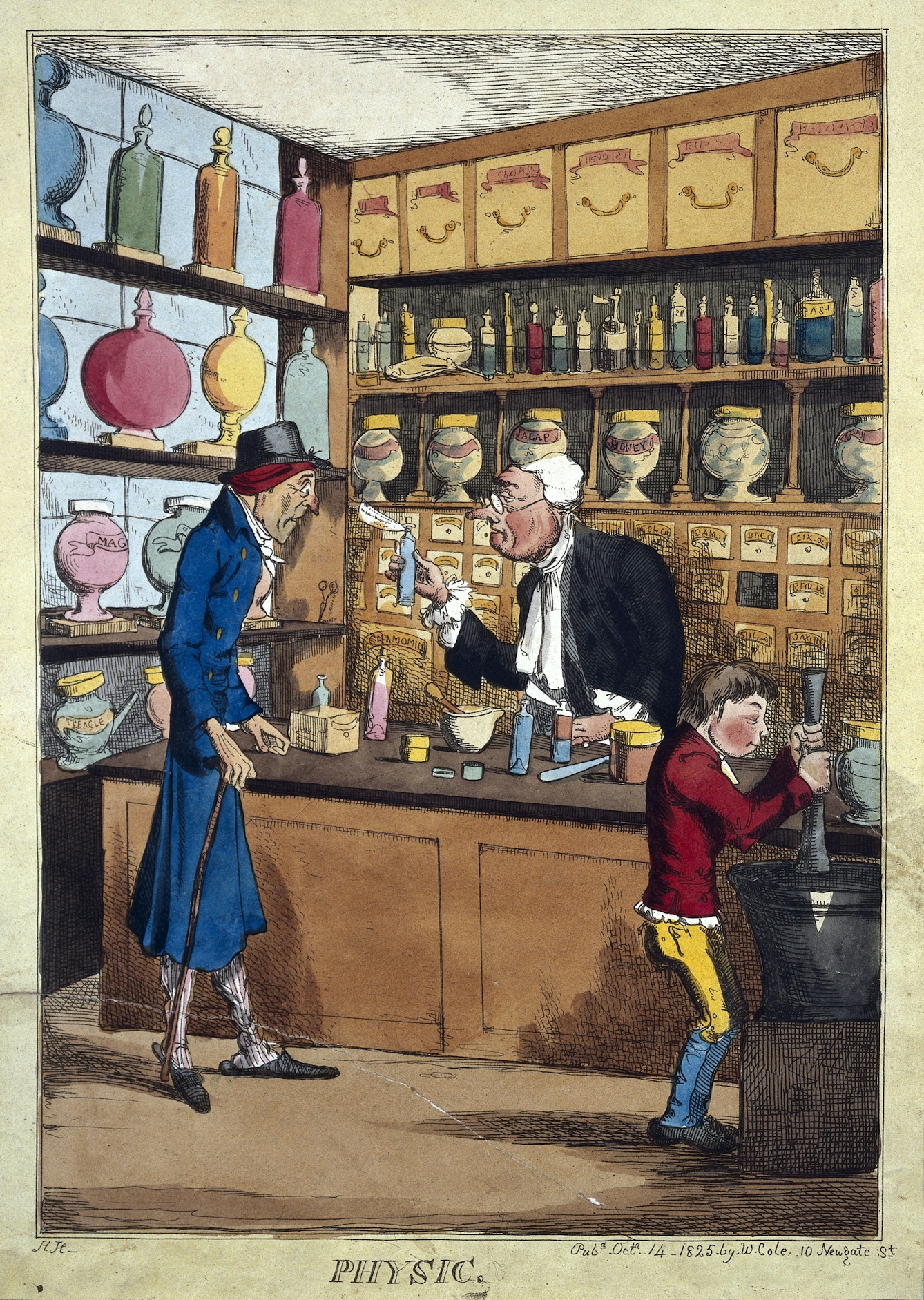
Treacle is one of the labels among the jars in this caricature of a pharmacy by Henry Heath, 1825.
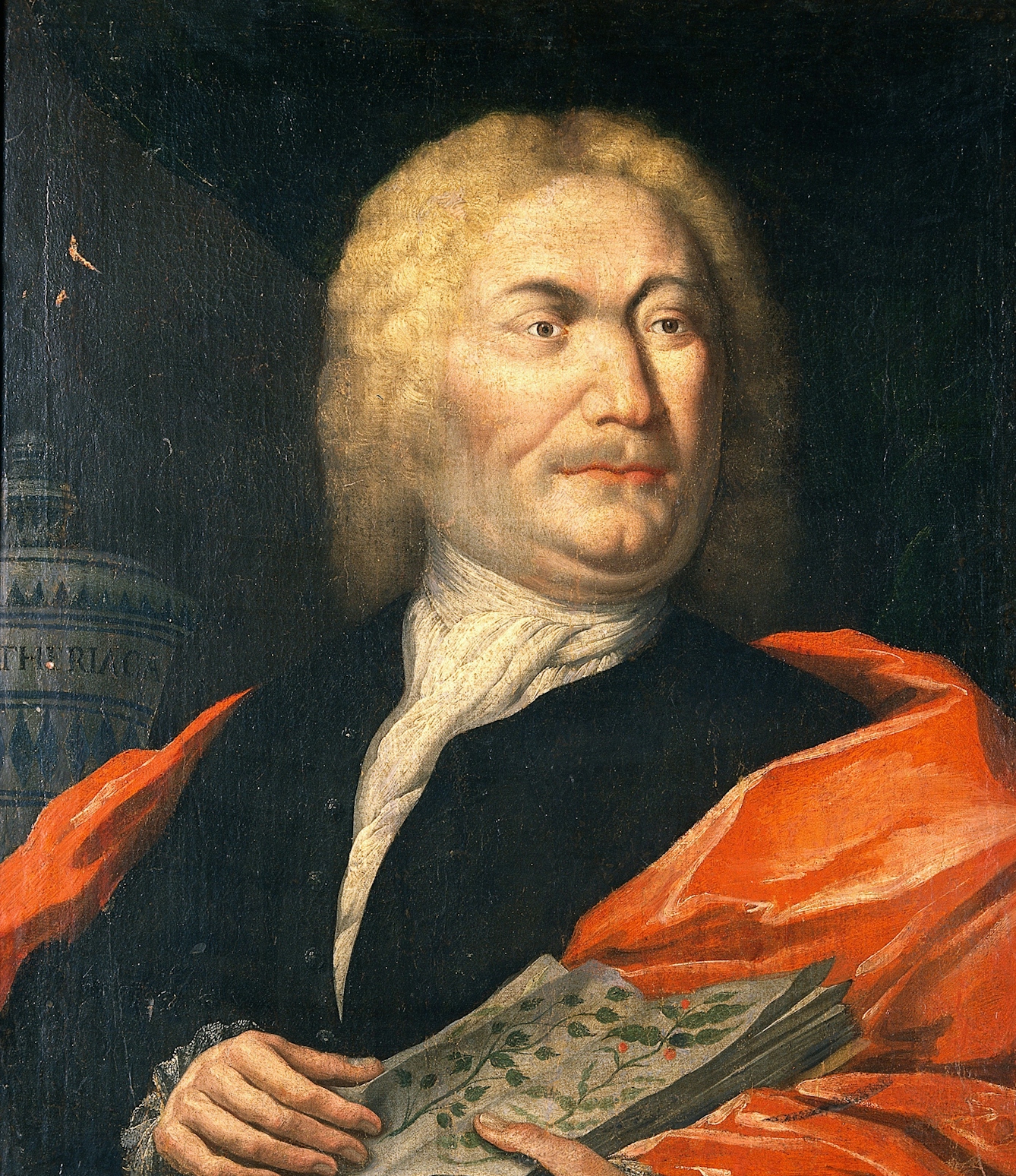
Portrait of an 18th-century man, perhaps an apothecary, wearing an academic gown and holding a herbal, with a jar labelled “Theriaca” in the background to enhance his status.
The criticism crystallised in England with William Heberden’s ‘Antitheriaca: An essay on Mithridatium and Theriaca’ (1745). Heberden demanded that the random ingredients and potential toxicity be tested against rational theories and rigorous experiments. He also questioned how antique remedies would work against more recently discovered poisons. He claimed that greedy people had exploited the legends surrounding the remedies and people’s fear of poisons. His opposition may not have been entirely disinterested: his own variation of theriac, popularly known as Heberden’s Ink, remained in the ‘British Pharmacopoeia’ until 1890.
A surviving draft copy of the ‘Edinburgh Pharmacopoeia’ shows that mithridatium and theriac were struck out of the 1756 edition. They had disappeared from the ‘London Pharmacopoeia’ by 1788, but 39 theriacs appeared in a mid-18th-century ‘Lexicon for Apothecaries’ in the Netherlands. And theriacs continued to appear in pharmacopoeias in France, the Netherlands, Spain, Sardinia and Germany well into the 19th century.

This advert for lung tonic contained “coltsfoot, horehound, tolu, chloroform, aniseed, peppermint and theriac”. It seems likely that this was the latinised form of treacle. ‘Chemist and Druggist’, 7 November 1936.
A product called Andromachus Theriac was sold in Rome in the 1980s for insomnia, disorders of the nerves and digestive complaints. But 20th-century references to theriac in adverts and formulations seemed to refer to syrupy treacle rather than its complex ancestor, perhaps trading on the sense of mystery and longevity to mask a much more mundane product. The brand and its associated ceremony have finally passed into history.
About the author
Briony Hudson
Briony is a pharmacy historian, curator, lecturer, and past President of the British Society for the History of Pharmacy.

